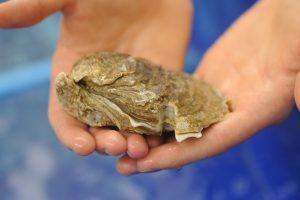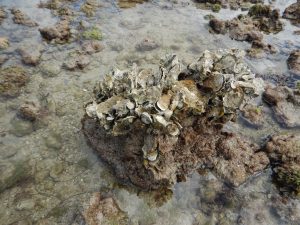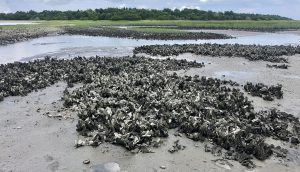As on the East Coast, native oyster populations in California are today only a fraction of what they once were. Besides reducing wild-sourced seafood for humans, the oysters are also no longer providing ecosystem services such as filtering water and building reefs for fish and other species. Efforts to restore California’s only native oyster have met with mixed success, even in relatively pristine waterways such as Tomales Bay along Point Reyes National Seashore. Why? California Sea Grant researchers identified oyster predation by alien voracious snails as a primary explanation for restoration failure in Tomales Bay. The snail, known as the Atlantic oyster drill, has roughly halved the expanse of habitat suitable for reestablishing the native Olympia oyster. To avoid oyster predators, scientists recommend rebuilding oyster beds in the estuary’s center, where there is also an abundance of phytoplankton (food). One of the main strategies for rebuilding native oysters in Tomales Bay has been to place bags of empty oyster shells on the seafloor, to create substrate on which young oysters might settle and grow. This project suggested that substrate is not a limiting factor for oyster recovery in most of the bay and that the bags-on-the-floor approach should, at the very least, be limited to the center of the estuary. Findings were incorporated into UC Davis’ oyster restoration plan for the bay. Photo: Brendan Tougher | California Sea Grant



